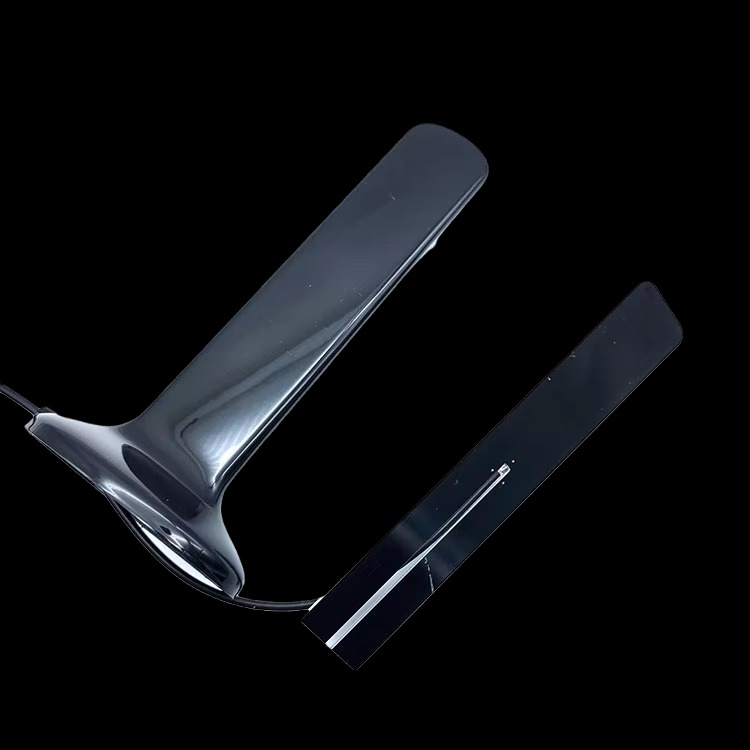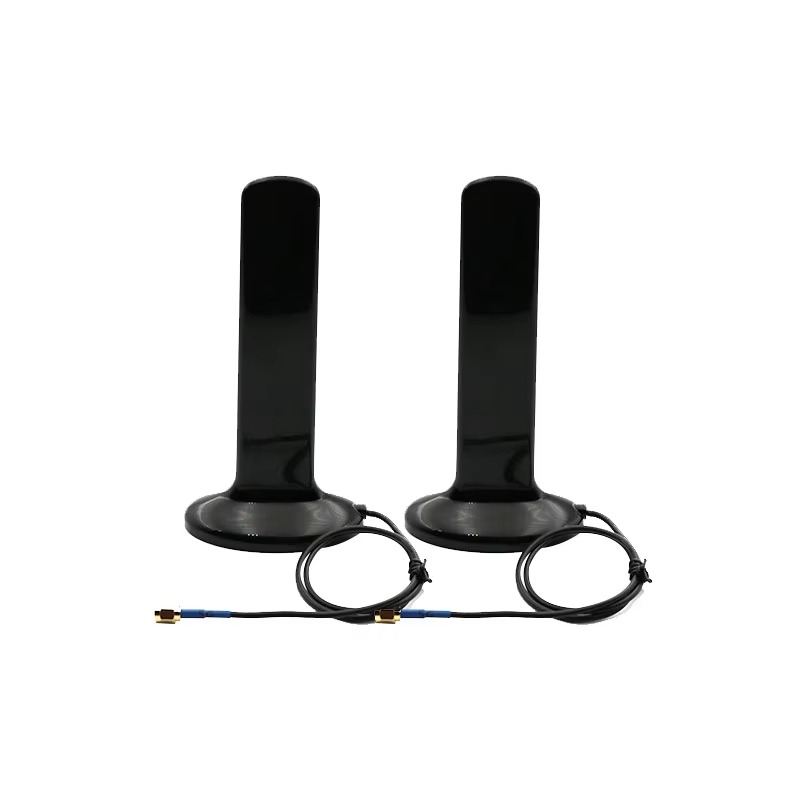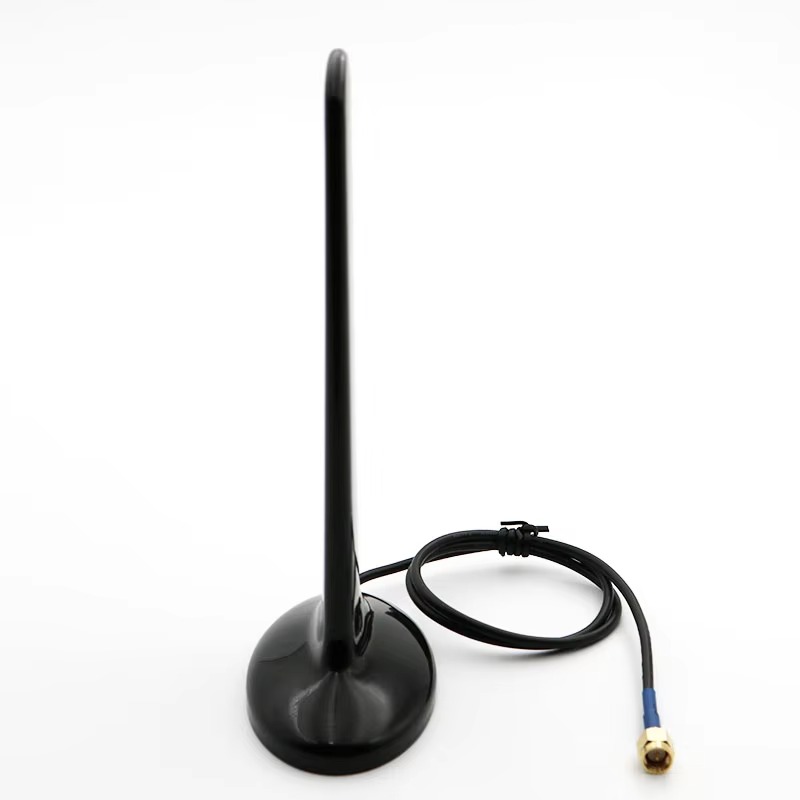the heart of the 4G WIFI GPS Combination Antenna
At the heart of the 4G WIFI GPS Combination Antenna’s adaptability is its support for multiple connectors: FAKRA, SMA, MCX, and MMCX. This flexibility ensures compatibility with a vast array of devices, from automotive infotainment systems to consumer electronics and industrial equipment. FAKRA connectors, a staple in automotive applications, feature a keyed, color-coded design that prevents incorrect mating and ensures secure connections in high-vibration environments—critical for vehicles where reliability is paramount. SMA connectors, with their threaded coupling mechanism, are widely used in industrial and consumer devices, offering durability and low signal loss, making them ideal for outdoor sensors or routers. MCX and MMCX connectors, smaller and more compact, are perfect for space-constrained devices like wearables, drones, or portable IoT gadgets, where miniaturization is key. This variety of connectors allows manufacturers and users to select the optimal interface for their specific application, eliminating the need for adapters that can introduce signal loss or reliability issues. For example, a car manufacturer can integrate the antenna using FAKRA connectors for seamless compatibility with existing automotive harnesses, while a drone builder might opt for MMCX connectors to save space in the drone’s compact frame.
The antenna’s gain range of 3-28 dBi is strategically engineered to balance performance across its diverse frequency bands, ensuring optimal signal amplification for each type of communication. Gain, measured in decibels relative to an isotropic radiator (dBi), determines the antenna’s ability to focus signal energy, and the variable range here is tailored to the unique demands of 4G, WIFI, and GPS. For 4G and WIFI, which often operate in environments with moderate signal strength, a gain of 3-10 dBi is sufficient, avoiding the over-amplification of noise that can degrade data transfer speeds. This moderate gain ensures stable connectivity for tasks like streaming, web browsing, or sensor data transmission, even in areas with reasonable network coverage. For GPS and GNSS, which rely on weak signals from satellites orbiting thousands of kilometers away, the higher end of the range (up to 28 dBi) becomes critical. This high gain, combined with a low-noise amplifier (LNA), boosts faint satellite signals to levels that can be processed by receivers, ensuring accurate positioning even in challenging conditions—such as urban canyons with tall buildings or dense forests with limited sky visibility. The ability to adjust gain across bands makes the antenna versatile, performing equally well in scenarios where strong signals are available and where amplification is needed to overcome obstructions.
An impedance of 50 ohms aligns the antenna with global industry standards for RF (radio frequency) systems, ensuring seamless integration with a wide range of receivers, modems, and transceivers. Impedance matching is essential for maximizing power transfer between the antenna and connected devices, minimizing signal reflection that can cause interference, reduce range, or degrade performance. A mismatch between the antenna and the device can lead to significant signal loss—up to 50% or more in extreme cases—compromising 4G data speeds, WIFI reliability, or GPS accuracy. By adhering to the 50-ohm standard, the antenna ensures efficient signal transmission across all its frequency bands, from the lower 4G frequencies (690-960 MHz) to the higher WIFI bands (5150-5850 MHz). This compatibility simplifies design and integration for manufacturers, as most RF components—including coaxial cables, amplifiers, and modems—are engineered for 50-ohm systems. Whether connected to a 4G LTE modem in a industrial sensor or a WIFI router in a smart home, the antenna’s 50-ohm impedance guarantees consistent, high-quality signal transfer.
antenna’s support
The antenna’s support for both linear and circular polarization methods ensures optimal performance across its various applications, adapting to the unique characteristics of 4G, WIFI, and GPS signals. Linear polarization—either vertical or horizontal—is ideal for 4G and WIFI, as most cellular towers and WIFI access points transmit linearly polarized signals. This alignment maximizes signal coupling, ensuring strong, stable connections for data transfer. For example, vertical polarization is commonly used for 4G in urban areas, where signals travel horizontally between towers and devices, while horizontal polarization may be preferred for WIFI in environments where reflections off the ground are common. Circular polarization—either right-hand (RHCP) or left-hand (LHCP)—is critical for GPS and GNSS, as satellite signals are transmitted with circular polarization to counteract the Faraday effect, a phenomenon where the ionosphere rotates the polarization of electromagnetic waves. By using circular polarization, the antenna efficiently captures these rotated signals, ensuring accurate positioning even as the device moves or tilts—such as in a moving vehicle or a drone in flight. This dual polarization capability allows the antenna to excel across all its functions, from high-speed data transfer to precise location tracking.
The use of RG174 coaxial cable enhances the antenna’s performance and flexibility in installation, ensuring low signal loss and protection against electromagnetic interference (EMI). RG174 is a small-diameter, lightweight cable designed for high-frequency applications, making it ideal for routing through tight spaces in devices, vehicles, or industrial equipment. Its construction includes a solid copper-clad steel center conductor for efficient signal transmission, a dielectric insulator to minimize loss, a braided copper shield to block EMI, and a durable PVC outer jacket. The braided shield is particularly important in environments with high EMI, such as industrial facilities with heavy machinery, vehicles with complex electrical systems, or smart homes with multiple electronic devices. By blocking EMI from sources like motors, power lines, or other radios, the shield ensures that 4G, WIFI, and GPS signals remain clean and free from noise, preserving data integrity and positioning accuracy. The PVC jacket resists abrasion, oil, and temperature extremes, ensuring the cable remains reliable even in harsh conditions—whether routed through a vehicle’s engine bay or an outdoor sensor enclosure. For installers, the flexibility of RG174 simplifies routing, allowing the antenna to be placed in optimal positions (such as a vehicle roof for unobstructed GPS reception) while connecting to devices in confined spaces.
A standing wave ratio (VSWR) of ≤2.0 underscores the antenna’s efficiency in transferring signal power across all its frequency bands, ensuring minimal loss and consistent performance. VSWR measures the mismatch between the antenna’s impedance and the 50-ohm characteristic impedance of the coaxial cable, with lower values indicating better efficiency. A VSWR of 2.0 means that approximately 90% of the signal power is transferred from the antenna to the receiver (or vice versa), with only 10% reflected—an acceptable level for most applications, ensuring that sufficient signal strength is maintained for reliable communication and positioning. This efficiency is maintained across the antenna’s entire frequency range, from 690 MHz to 5850 MHz, ensuring consistent performance whether transmitting 4G data, WIFI packets, or receiving GPS signals. For example, when streaming video over WIFI, the low VSWR ensures that the signal is transmitted with minimal loss, resulting in smooth playback. When using 4G to send sensor data from a remote industrial site, the efficient power transfer ensures that even weak signals reach the network. For GPS, the low VSWR ensures that the amplified satellite signals are efficiently processed by the receiver, maintaining positioning accuracy.
The antenna’s broad working frequency range—690~960 MHz, 1710~2690 MHz, 1561 MHz, 1575.42 MHz, 2400-2500 MHz, and 5150-5850 MHz—covers all key bands for 4G, WIFI, and GPS/GNSS, ensuring comprehensive connectivity across global markets. The 690-960 MHz and 1710-2690 MHz bands support 4G LTE, covering both low and mid-frequency ranges used by cellular networks worldwide. Low-frequency bands (690-960 MHz) offer better penetration through buildings and terrain, making them ideal for rural or urban environments with obstacles, while mid-frequency bands (1710-2690 MHz) provide higher data speeds, suitable for urban areas with dense network coverage. The 1561 MHz and 1575.42 MHz bands support GNSS, including BeiDou (1561 MHz) and GPS (1575.42 MHz), ensuring accurate positioning across global navigation systems. The 2400-2500 MHz (2.4 GHz) and 5150-5850 MHz (5 GHz) bands support WIFI, with 2.4 GHz offering longer range and better penetration, and 5 GHz providing higher data speeds and less interference—critical for bandwidth-intensive applications like video streaming or IoT device communication. This multi-band coverage eliminates the need for region-specific antenna designs, making the antenna suitable for global deployment in devices ranging from international fleet vehicles to cross-border IoT networks.
working voltage of 3-5V DC ensures
A working voltage of 3-5V DC ensures compatibility with a wide range of devices, from low-power IoT sensors to automotive systems, simplifying integration and power management. Most electronic devices operate on 3-5V power supplies, allowing the antenna to draw power directly from the host device without the need for additional voltage converters. This is particularly important for battery-powered devices like portable sensors or drones, where energy efficiency is critical—the antenna’s low power requirement minimizes drain on batteries, extending operational life. For active components like the LNA used in GPS amplification, the stable 3-5V supply ensures consistent gain and noise performance, preserving the high gain (up to 28 dBi) needed for weak satellite signals. In automotive systems, which typically use 12V power, a simple voltage regulator can step down to 3-5V, ensuring compatibility without compromising performance. This flexible voltage range makes the antenna a versatile choice for designers, reducing complexity and cost in power management circuits.
The antenna’s operating temperature range of -40~85 degrees Celsius ensures reliable performance in extreme environments, from freezing polar regions to scorching desert climates. This ruggedness is critical for outdoor and industrial applications, where devices are exposed to harsh weather conditions. In sub-zero temperatures (-40°C), the antenna’s materials—including its ABS housing, RG174 cable, and internal components—remain functional, with no degradation in signal strength or polarization. The LNA maintains its gain, ensuring that weak GPS signals are still amplified effectively, while the coaxial cable’s PVC jacket resists cracking in cold conditions. In high temperatures (85°C), the antenna avoids thermal damage: the LNA does not experience thermal runaway, the cable’s insulation remains stable, and the connectors do not warp or seize. This temperature resilience makes the antenna suitable for use in a wide range of applications, from Arctic weather stations to desert-based solar power monitors, ensuring that connectivity and positioning remain reliable regardless of environmental extremes.
The 4G WIFI GPS Combination Antenna’s applications are diverse, spanning automotive, industrial, consumer electronics, and IoT sectors. In automotive systems, it powers in-car connectivity, supporting 4G for real-time traffic updates, WIFI for passenger entertainment, and GPS for navigation—all through a single antenna mounted on the roof or dashboard. Its FAKRA connector compatibility and temperature resilience make it ideal for this environment, withstanding vibrations and extreme temperatures. In industrial settings, the antenna enables remote monitoring of sensors, using 4G to transmit data to cloud platforms, WIFI for local network communication, and GPS for asset tracking. Its SMA connector option and EMI shielding ensure reliable performance in factories or construction sites with high levels of electrical noise. For consumer electronics, such as smart home hubs or portable routers, the antenna provides versatile connectivity, with MCX/MMCX connectors saving space and supporting both WIFI and 4G for seamless internet access. In IoT devices like agricultural sensors or wildlife trackers, the antenna’s low power requirement and broad frequency range ensure long battery life and global connectivity, even in remote areas.
Looking to the future, the 4G WIFI GPS Combination Antenna is well-positioned to support emerging technologies, including 5G and advanced GNSS systems. While currently optimized for 4G, its broad frequency range can be extended to include 5G bands (such as 3.5 GHz or 24 GHz), enabling faster data speeds and lower latency for applications like autonomous vehicles or industrial automation. The antenna’s flexible polarization and high gain can also be adapted to new GNSS constellations, such as India’s NavIC or Europe’s Galileo, ensuring compatibility with global positioning systems of the future. As the IoT continues to expand, with billions of devices requiring connectivity and positioning, the antenna’s all-in-one design will become increasingly valuable, reducing complexity and cost in smart cities, precision agriculture, and connected infrastructure.
In conclusion
-
the 4G WIFI GPS Combination Antenna represents a perfect synergy of versatility, performance, and durability, designed to meet the diverse connectivity needs of modern devices. Its flexible connectors, broad gain range, dual polarization, and robust construction ensure reliable operation across 4G, WIFI, and GPS bands, in environments ranging from urban centers to remote wilderness. Whether powering in-car infotainment, industrial sensors, or smart home systems, this antenna delivers seamless connectivity and accurate positioning, enabling the next generation of connected technology. As the demand for integrated, high-performance antennas grows, the 4G WIFI GPS Combination Antenna will remain a cornerstone of modern communication systems, connecting devices and enabling innovation across industries.




































































 Language
Language
 En
En Cn
Cn Korean
Korean

 Home >
Home > 







 18665803017 (Macro)
18665803017 (Macro)













